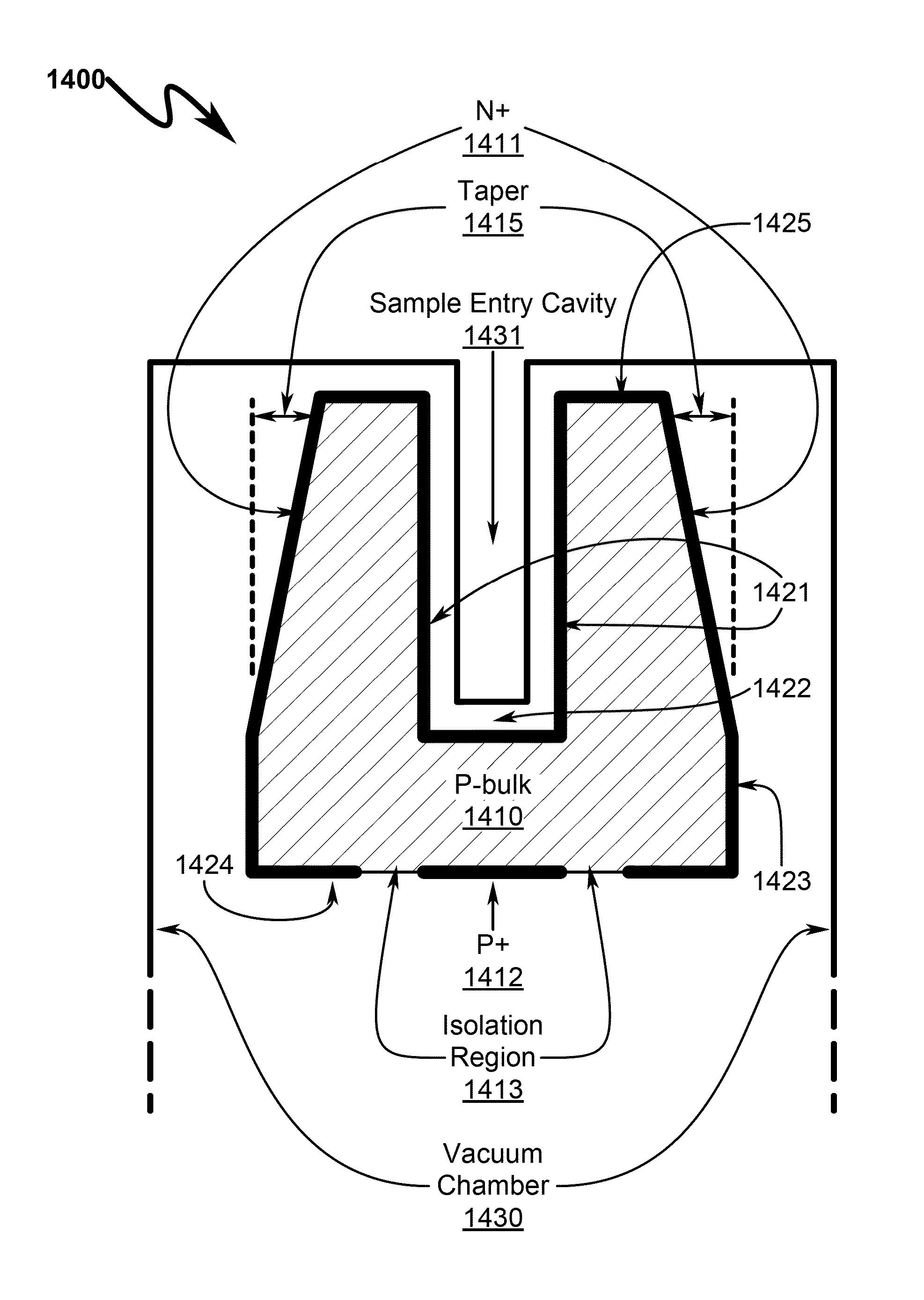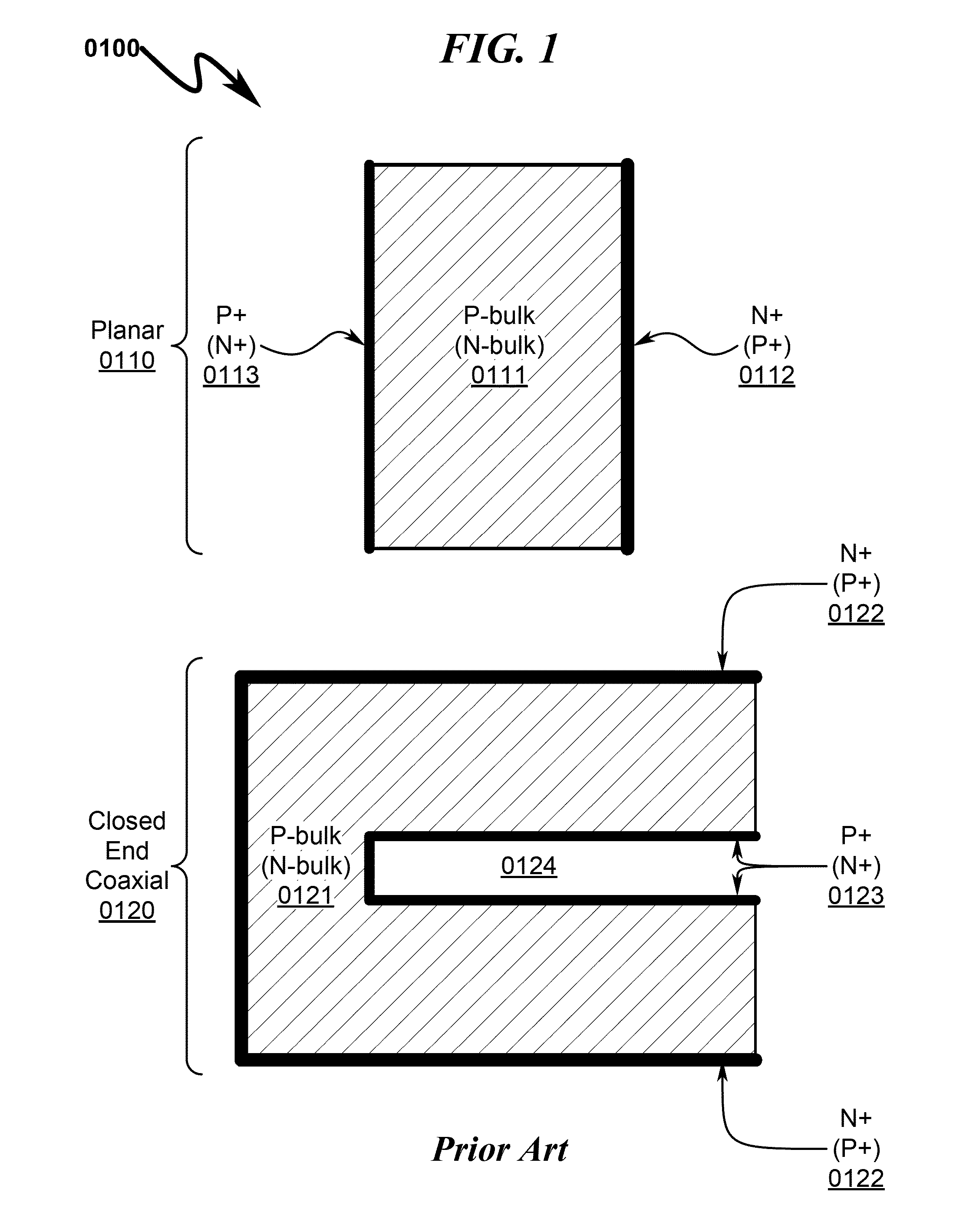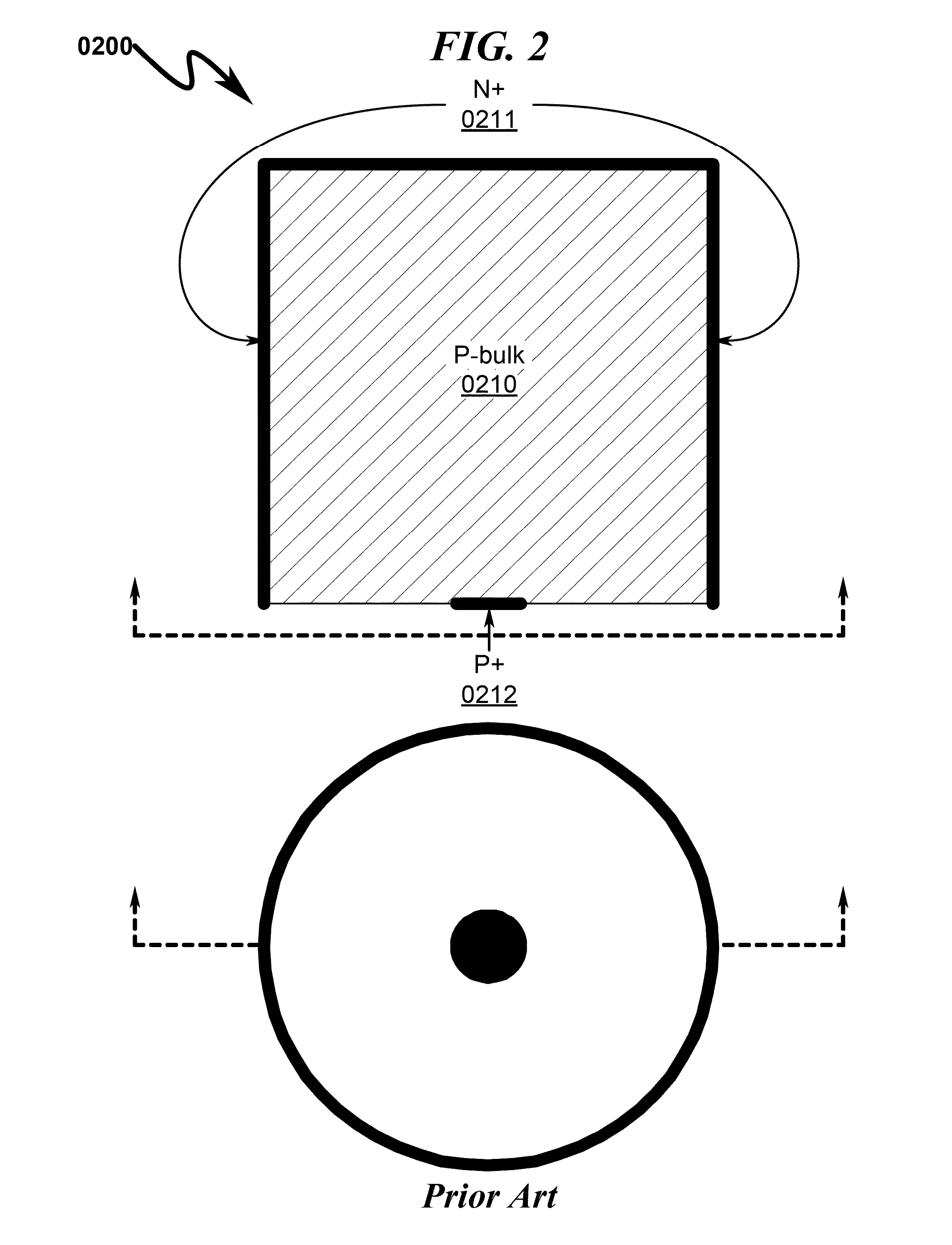Small anode germanium (SAGe) well radiation detector system and method
a germanium detector and small anode technology, applied in the field of radiation detection systems and methods, can solve the problems of reducing the energy resolution of germanium detectors, affecting the overall measurement efficiency, and affecting the detection efficiency of ionizing radiation, and achieves the effect of increasing capacitance and small capacitan
- Summary
- Abstract
- Description
- Claims
- Application Information
AI Technical Summary
Benefits of technology
Problems solved by technology
Method used
Image
Examples
embodiment
Preferred Embodiment Method Summary
[0178]The present invention preferred exemplary method embodiment anticipates a wide variety of variations in the basic theme of implementation, but can be generalized as a SAGe well radiation detector method, the method operating in conjunction with a SAGe well radiation detector system, the system comprising:[0179](a) P-type bulk germanium volume (PGEV);[0180](b) N+ electrode;[0181](c) P+ electrode; and[0182](d) vacuum encapsulating chamber enclosure (VECE);[0183]wherein[0184]the PGEV further comprises an internal surface and an external surface;[0185]the external surface comprises an outer surface, an external base region (EBR), and a cavity entry region (CER);[0186]the PGEV further comprises an internal well cavity void (IWCV), the surface of the IWCV forming the internal surface;[0187]the P+ electrode is formed on the EBR and surrounded by an isolation region;[0188]the N+ electrode is formed on the internal surface, the outer surface, the CER,...
PUM
 Login to View More
Login to View More Abstract
Description
Claims
Application Information
 Login to View More
Login to View More - R&D
- Intellectual Property
- Life Sciences
- Materials
- Tech Scout
- Unparalleled Data Quality
- Higher Quality Content
- 60% Fewer Hallucinations
Browse by: Latest US Patents, China's latest patents, Technical Efficacy Thesaurus, Application Domain, Technology Topic, Popular Technical Reports.
© 2025 PatSnap. All rights reserved.Legal|Privacy policy|Modern Slavery Act Transparency Statement|Sitemap|About US| Contact US: help@patsnap.com



